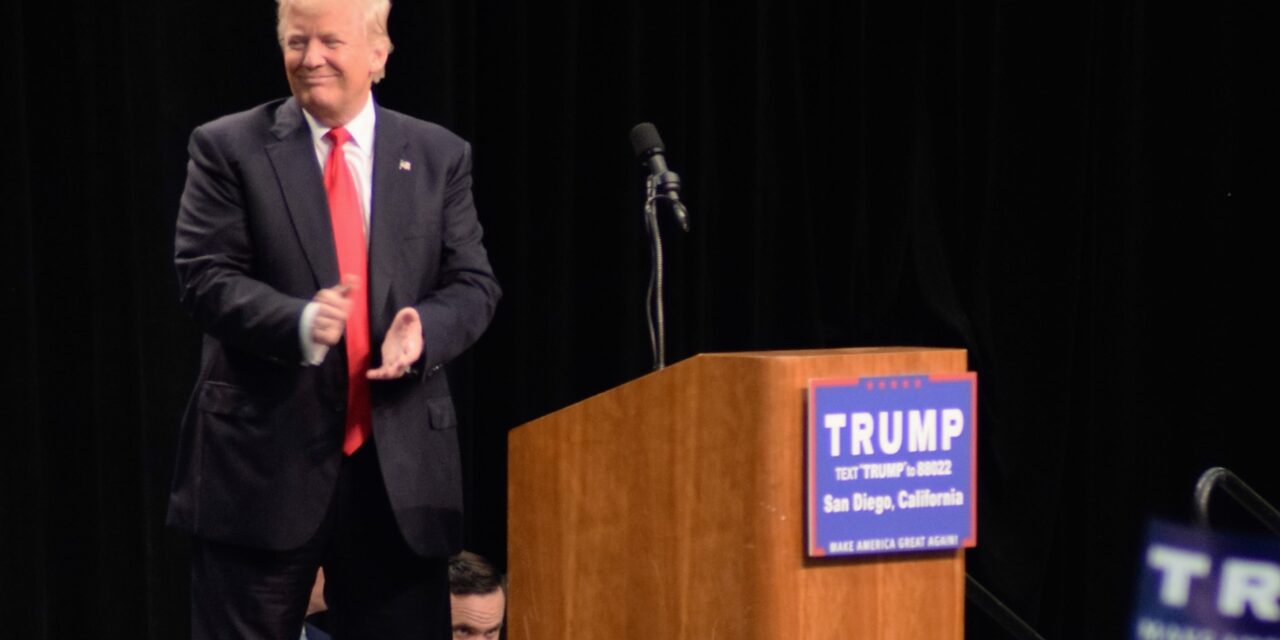
By Danny R. Johnson/Political News Editor
WASHINGTON, DC–At its
Trump was acquitted on a (near) party line after a short-circuited trial. This result was not because Democrats failed to convince the country of Trump’s guilt. Multiple polls showed upwards of 60 percent of Americans believe he broke the law, and a majority of Americans believed he should be removed from office. The Republicans knew they could confidently defy the will of the American people without consequences.
This is not an accident of history. It’s the result of a very deliberate strategy engineered by Mitch McConnell and funded by conservative billionaires to ensure that a shrinking, conservative, mostly white minority can hold on to power over a growing, progressive, diverse majority. More than Jim Comey, or even Russia, this is why Trump won.
And until Democrats understand what has happened and what is at stake, they may win a few elections, but they will never be able to enact a progressive agenda.
STEP ONE IN UNDERMINING DEMOCRACY: STOP PEOPLE FROM VOTING
Heading into Election Day 2008, the Republicans knew they were probably going to lose. We had heard reports that some of the staff on the McCain-Palin campaign were spending the last weeks of the race updating their résumés and leaving early to go to happy hour.
While the fact of Obama’s victory wasn’t surprising, the size of the victory shocked the Republican Party. Obama crushed McCain all across the country and especially in the so-called battleground states that decide presidential elections: Obama won Wisconsin by 14 points, Iowa by 9 points, Pennsylvania by 11 points, and Michigan by a whopping 16 points. He flipped Ohio and Florida, which were the states that delivered the election to Bush four years prior. But the scariest part for the Republicans was that Obama won previously deep-red states like Virginia, Indiana, and North Carolina that no one thought a Democrat could compete in, let alone win.
Many of these battleground states allowed what is called “early voting,” where voters are allowed to come to a designated location to cast their vote well in advance of Election Day.
Voting is hard. It takes time. And a lot of Americans don’t do it because they are simply too busy with work and family. Early voting policies are a pretty commonsense, theoretically noncontroversial solution to the problem of low turnout. The Obama campaign saw an opportunity in these policies. Our victory depended on getting large numbers of new and less-frequent voters to the polls.
Typically, campaigns have one day to bug people to vote. There is a high margin for error when you have maybe twelve hours to remind someone to vote. It’s much easier and more effective to have weeks to accomplish the same task. The Obama campaign would organize rallies within walking distance of early voting sites. After Obama was done speaking, the campaign staff would march the attendees over to vote early. Our campaign research told us that the more people heard about early voting, the more likely they were to do it. So, we talked about it all the time. The Obama campaign team developed a strategy to pitch as many stories as possible about their early voting strategy.
This strategy was remarkably effective. According to the ACLU, 70 percent of African American voters in North Carolina voted early as part of an overall increase in African American turnout of more than 6 percent.
In the wake of being washed out by a flood of new voters, the Republicans had four years to figure out how to do the same thing—register new Republican voters and use early voting. Did they do that? Instead of trying to figure out how to get more Republicans to vote, the Republicans decided to figure out how to get fewer Democrats to vote.
In 2008, Michigan, Iowa, Pennsylvania, Ohio, and Wisconsin had Democratic governors. In 2010, all of those Democrats were replaced by Republicans. Voter identification laws were the centerpiece of their strategy to wrest power from the public.
On its face, voter ID laws seem harmless—you need to show an ID to get in a bar and to buy cold medicine. The evil genius of these laws is that they sound so harmless that too many Democrats are afraid to make the argument against them. They are not harmless. They are quite effective at keeping the people most likely to vote Democratic from voting. According to the Brennan Center for Justice, 25 percent of African Americans don’t have a government-issued ID. Only 8 percent of whites don’t have an ID. This is not an accident. Republican Congressman Glenn Grothman said the quiet part out loud when he argued that a Republican would be able to win Wisconsin in 2016 because “now we have photo ID, and I think photo ID is going to make a little bit of a difference as well.”
If the Republicans can’t win your vote, they will take your vote. This effort followed in the tradition of the Jim Crow policies put in place after Reconstruction to prevent newly freed slaves from having any political power. These laws are costing Democrats elections and helping Republicans maintain power despite appealing to fewer and fewer
voters. According to one study, Wisconsin’s voter ID law potentially suppressed 200,000 votes. Donald Trump won that state by 22,700 votes.
STEP TWO: GERRYMANDER
Here’s a little riddle: The Republicans won the popular vote in the 2010 elections for the House of Representatives by about 7 points and picked up 63 House seats. If in 2018 the Democrats won the popular vote by 8 points, how many seats did they pick up?
More than 63, right? More votes should mean more seats, right? Seems like a pretty basic principle of democracy.
Nope. The Democrats picked up only 40 seats. This is not some freak accident. It’s by devious design. It’s a direct result of the Republican Party using the redistricting process to hold on to more power with fewer votes.
A quick briefing on redistricting: Not all elections have equal results. Every ten years, congressional and state legislative districts are redrawn based on the results of the most recent census. States have different ways of accomplishing this task, but many of them allow the politicians in power at the time to draw the district lines as they see fit. The politicians who happen to have this power also happen to frequently draw the districts in ways that help deliver more political power to the party they happen to be a member of. Redrawing the districts in absurd ways to favor one political party is known as gerrymandering.
It worked like a charm: In 2012, the Democrats won more votes in House races but only picked up a meager eight seats.
In Wisconsin, the Democrats won every statewide election in 2018—some by wide margins—yet the Republicans still won 63 of 99 state assembly seats and 11 of 17 state
senate seats. The goal of gerrymandering to this degree is not just to make your vote count less; it’s to make you know your vote doesn’t count in the hope that you won’t vote again. Cynicism is the ally of conservatism.
Democrats had some success over the years challenging the constitutionality of these gerrymandering schemes in courts.
In a five-to-four decision in 2019, the Supreme Court ruled that gerrymandering was an issue for voters to decide, not the courts. In other words, the Supreme Court said if you don’t like gerrymandering, vote out the people doing the gerrymandering—except you can’t vote them out because of (yes, you guessed it) gerrymandering. Apparently, Harvard Law doesn’t require a course in common sense for a law degree. Heads, Republicans win; tails, Democrats lose. What a country!
STEP THREE: PUTTING A FOR SALE SIGN ON DEMOCRACY
When the Obama White House were plotting out the State of Union in 2010, they had a lot of things to cover—the economy, health care, the environment, and foreign policy. One thing that wasn’t on our agenda was campaign finance reform. But the Supreme Court had other ideas.
In the weeks before President Obama’s address to Congress, the Supreme Court rocked the political word by ruling for the plaintiffs in Citizens United. The gist of their decision was that corporations and individuals could now spend unlimited amounts of money to elect their candidates of choice.
The Citizens United ruling caused a flood of political spending from moneyed interests. According to the Center for Responsive Politics, outside groups spent approximately $70 million during the last midterm election before the Citizens United decision. In
2010, the first midterm election since the decision, outside spending increased to more than $300 million. Democratic candidates were washed away in a wave of money. The outside spending allowed the Republicans to put a lot more races in play, and the Democrats were simply unable to keep up. Citizens United helped turn a tough election for Democrats into a historic ass whipping.
In 2012, Republicans outspent the Obama reelection campaign. Obama was able to raise more money than Romney, but the Republican-affiliated groups unleashed by the new law outspent their Democratic counterparts $418 million to $130 million. Things have gotten worse in every subsequent election. The 2020 campaign promises to a financial bloodbath for Democrats.
The voices of millions of voters are being drowned out by a new Republican-supported campaign finance system that makes candidates dependent on billionaires to get their message out. But it’s also bad for Democrats: there are simply more Republican billionaires willing to spend more of their billions to win elections. It takes a hundred thousand Democrats donating $10 to match one Republican writing one $1 million check. Advantage Republicans.
STEP FOUR: RIGGING THE COURTS
The Republicans have taken steps to prevent you from voting, worked to make your vote count less if you do vote, and empowered billionaires to buy elections. But what if all those things fail and Democrats still win? Don’t worry—the Republicans have a plan for that.
The courts. Conservative control of the Supreme Court is the Republican break-glass plan so that they can block progressive policies no matter what the voters want.
Imagine this scenario: A Democratic House and Senate pass a new Voting Rights Act that protects against voter suppression and gerrymandering. A newly elected
Democratic president signs that bill hailing a return to more representative democracy in America. A Republican governor sues, and the case winds its way through the court system, landing in the Supreme Court. The Supreme Court strikes down the law in a five-to-four opinion authored by Justice Brett Kavanaugh.
Ouch! Democrats do everything right and still lose. Republicans in general and Mitch McConnell in particular have always known that there is nothing more important than shaping the courts. It’s why they have gone to unprecedented extremes to get their judges confirmed and to prevent Democratic-appointed judges from being confirmed.
This strategy has already borne an unbelievable amount of conservative fruit that has consolidated Republican power. Most notably gutting the Voting Rights Act, allowing for more voter suppression, and gerrymandering. The courts are a real problem for progressives that has gotten exponentially worse during the Trump era. The Republican plan to hijack the courts is a long time in the making.
The Republicans built a farm system of right-wing lawyers who are groomed for the bench starting as early as law school. This is basically the East German athletics model but for right-wing judges.
The Federalist Society is an organization of conservative lawyers that was founded in the early ’80s. Its origin story is filled with a who’s who of destructive conservative figures. Two of the Federalist Society’s first advisers were Robert Bork and Antonin Scalia. The Koch brothers provided some of the early money.
Membership in the Federalist Society became table stakes for any aspiring Republican attorney with eyes on a prestigious clerkship, a job at the Department of Justice, or a conservative law firm.
When George W. Bush was president, every single judicial appointment was either a member of the Federalist Society or approved by the Federalist Society. In 2016, Trump assuaged conservative concerns about his judicial appointments by releasing a list of people he would consider for the Supreme Court. He basically cut and pasted a list sent to him by the Federalist Society. Once Trump won the White House, he outsourced the process for picking and confirming judges—including two Supreme Court justices—to the Federalist Society.
The second part of the plan is to make sure Democratic presidents get to confirm as few judges as possible. When Obama was president, Mitch McConnell and the Senate Republicans did everything in their power to gum up the works and slow down judicial confirmations. In Obama’s first term, Republicans used legislative maneuvers to slow down the confirmation of Obama’s appointments.
The Republicans would filibuster even non-controversial nominations, which would demand 60 votes, and extend the amount of time spent on each confirmation. The delay process was very effective because the Senate works on a schedule that sloths would consider lazy.
The Republicans also abused something called the “blue slip” procedure, which gives senators an informal veto on judicial nominations for seats in their state.
In 2013, the Senate Democrats, fed up with unprecedented levels of Republican obstruction, made the wise decision to eliminate the filibuster for judicial appointment. For a brief period, Obama was able to get judges confirmed, including several key appointments to the D.C. Circuit Court of Appeals, which is the second most important court in the land. However, this return to constitutional governance was brief. The
Republicans won the Senate in 2014 and ground the process to a halt. Thanks to McConnell’s norm-shattering approach, Obama left office with more than 100 vacancies, including a Supreme Court seat that, if filled, would have tipped the court in a liberal direction.
THE STAKES
While Democrats spend our time passing the best policy regardless of politics, the Republicans have spent years rigging the game to hold on to political power. If there is we can take away from eight years of the Obama administration, it is that winning the next presidential election is not enough.
For all the justified harrumphing about Trump’s authoritarian leanings, the challenges to our democracy began long before he showed up and will be around long after he leaves. American democracy, which has never been perfect, is in real danger.
The next Democratic president will be governing with one hand tied behind his back if the party does not engage in an aggressive, comprehensive strategy to unrig the game and “Make America a Democracy Again.”




